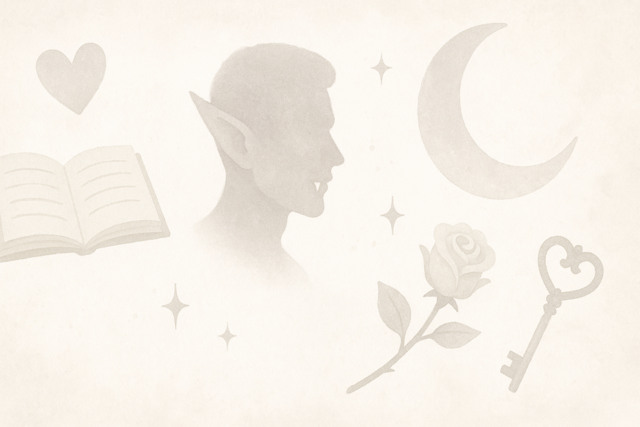More on Plot in Novel Writing
A. Specific Types of Plot Structures
Within this article, we will discuss the different types of plots that exist, and specific ways in which the writer can construct attention-sustaining plots.
B. Plot Types
Essentially, there are two main types of plot structures: the journey and the hero-centric version.
Between the two, the journey is simpler to accomplish, whereas the hero (protagonist) involves a more complex configuration.
The journey concentrates on the path the protagonist takes to reach his goal, the primarily physical (and some mental) challenges that occur along the way, and the specific life lessons learned as a result.
In contrast, the hero plot structure focuses on the internal struggles of the protagonist, the ways in which he/she interacts with persons along his/her course, the issues he/she is able to overcome as a result of heading down this particular road, the role he/she plays in accomplishing the end-goal, and the profound impact his/her ultimate accomplishments have within his/her own life, and on that of the other characters in the story.
As you can see, the latter plot structure, the hero, requires a greater number of steps than the former version, the journey. Not only are there more questions to answer, but within the hero, there is also a more in-depth take on the story.
In deciding which type of structure to employ, you should consider whether you want to take a more straightforward, progressive approach, or pursue a more exhaustive process from the hero's perspective, entailing a thorough exploration of all tenets of the story.
C. Literary Schematics: History & Imagery
Within a novel there should be a series of plot points.
Typically, the framework for a literary work should comply with a general pyramid schematic involving a beginning, middle, and end. In between each plot point, there exists a level of rising and falling action.
Reportedly, the pyramid schematic was introduced by Aristotle in 350 B.C.. He was the first to use beginning, middle, and end, to describe a story that moved along a linear path, based on a series of cause and effect actions.
Based upon Aristotle's writings in Poetics, a plot can be defined as "the arrangement of incidents that each plausibly follows from the other." Relying on the term "mythos," in place of "plot," Aristotle described the literary component as a deceptively simple tool that writers could use to showcase their behaviors, and the manner in which they react to other characters' actions and attitudes.[i]
Working off of Aristotle's ideas, the German critic Gustav Freytag, who was known for the structural analyses he conducted on ancient Greek and Shakespearean dramas, divided literary works into five parts (acts).
Building a framework around his five central points, Freytag is credited with conceptualizing what today is known as Freytag's Pyramid, the visual schematic currently employed for novels, and a host of literary works.
D. Types of Schematics
Now that we have a handle on what a schematic is, and the role it plays in the creation of the novel, we now will investigate the two major types of plot structure:
The Visible One -- The story structure is apparent to the reader; the bulk of information is plainly known, as it has been explained in the dialogue, and verified by the characters' responses and affirmations.
The Invisible One -- The story structure requires the reader to be swept up into the story and, thus, wanting to follow along to learn what transpires as a result of a series of actions leading up to the climax and ultimate resolution.
Basically, the writer will strive to make some information very obvious, while other information will be kept under wraps, until the moment in the story when it is appropriate to unveil it.
E. Elements of the Plot
On behalf of both of the aforementioned schematics, it is important for writers to develop their works by providing specifics for each of the following elements, filling in the blanks to create fully detailed plot points.
- Exposition -- Background and setting paint a picture illustrating the time, place, and general history of the central characters.
- Complication -- The catalyst that evolves into the major conflict.
- Climax -- The characters reach a turning point as they try to resolve their major complications.
- Resolution -- This is a series of events that bring closure to the conflict, and to the characters in the story. [iv]
F. Plot II: Summary
As we have come to understand, the plot plays a major role in the development of the novel. While the writer may be able to create memorable and/or colorful characters, a solid plot is still necessary in order to keep the story moving forward -- and the reader's interest piqued -- from the opening line to the closing statement.
Some first-time novelists feel that it may be necessary to knock the reader over the head with a litany of details and a scintillating story line. However, more often than not, good storytelling tends to be the result of cohesive story formation, mastery of suspense, and the restrained use of sharing/withholding information.
Rather than work on honing verbose writing abilities, a writer's time may be better spent learning how to construct a well-balanced story. Such a schematic begins slowly, and gradually gains steam, while never letting go of a sustained element of suspense that keeps the reader ensnared in the story until the very end.
Setting & Theme
Because the setting and theme are interwoven into the larger schematics of the story, it only stands to reason that once you have your plot and character studies completed, invariably, you will also have a strong sense of how best to establish your setting and theme.
A. Setting: Overview
To understand how the element of setting contributes to a story, let's first take a look at its basic definition: As a whole, the setting should contribute to a source of ideas, by providing a sense of the time and place in which a story takes place.
B. Setting: Types
With regard to settings, essentially there are two types:
1. Integral settings -- Essential to the plot, they influence action, character, or theme.
C. Specificity Versus Ambiguity
Regardless of whether you opt to employ a specific setting, (e.g., Seattle, 1998), or a vague sense of one, (west coast, near the end of the millennium), you also will need to include commentary as to the type of impact the factors of geographical locale and time period had upon the characters and major plot of your story.
For example, at the end of the decade, under the leadership of President Bill Clinton, Seattle residents came to adopt a similar liberal-minded approach to their personal lifestyles.
D. Setting: Creating Indelible Images
In order to create a setting, (regardless of whether fully defined, or ambiguous), that serves to create an appropriate backdrop for your story:
-
Find places that inspire your imagination.
-
Practice mindful observation as you go through your day.
-
Strive to present information in as credible a manner as possible; rather than use a setting as a jumping off point, try and stick to the realities (salient points) of such a location, for this will effortlessly help add credibility to your descriptions.
E. Creating Setting: Experts Weigh In
Children's book author, fantasy/science fiction novelist, and literature/writing teacher Jane Yolen, who has been referred to as the Hans Christian Andersen of America, and the Aesop of the 20th century, believes that too many writers do not consider landscape in the development of their setting.
"To their detriment, too many writers ignore landscape. The problem may be their lack of visual acuity for, as a society, we are unpracticed in the art of looking," Yolen said in her 2006 book, Take Joy: A Writer's Guide to Loving the Craft. [i]
She goes on to say, "A good many authors may know the term landscape, defined as the setting or background for their characters. However, it is the better authors who realize a great deal more. Place can be written as an after-thought, or it can be carefully deliberated in terms of how best to describe and incorporate it into the overall story."
In conclusion, Yolen states, "The better writers are well aware that, at times, landscape can serve such a range of purposes as to be used as a metaphor for broader-based ideas/places; to parallel the lives of the story's central characters; and/or as a character unto its own.
"Further, better writers also know that landscape can be a metaphor, whereby they may assign a well-known neighborhood, (e.g., Hell's Kitchen in New York City), a personality of its own, (e.g., Man-eating community), whereby competition is fierce and everyone has to watch their back. "
(From "An Eruption of Poppies," a chapter on the importance of landscape in fiction in Take Joy: A Writer's Guide to Loving the Craft).
F. Theme
In tandem with the setting, the novel's theme -- the underlying sentiment of the story -- is an element the writer needs to consciously carry out throughout the entire story. Specifically, expressed as part of a complete sentence, the theme/universal truth should consist of a single, cohesive message.
A noteworthy statement that comments upon society, humanity, or a specific human condition, the theme must be relayed in universal terms.
And, though themes have the ability to relay significant societal messages, it is important that they are not written in over-handed ways, whereby they come off as preachy or manipulative.
G. Theme: Types
- Primary theme - This is the most important idea within the story, (e.g., racial equality).
- Secondary theme - Akin to a sub-plot, secondary themes offer additional messages or ideas.
- Explicit themes -- These are central ideas, which are openly stated within the story.
- Implicit themes -- While these are also central ideas, these are not directly stated within the novel. The reader needs to infer the theme, based upon key elements and plot lines.
Art Influencing life or life influencing art? It has been said that in order to understand a theme, one must possess related life experiences. Yet, it also has been said that literature possesses the ability to enlarge one's understanding of life.
H. Theme Versus Motif
Quite often, aspiring writers confuse motifs with themes. To be certain you do not fall into the same trap, we will briefly explain the difference between the two literary techniques.
While a theme is a central idea that must be expressed in a complete sentence, a motif is the recurring presence of an object, (or image), which can be relayed within a single word or fragment. Commonly used examples of motifs include: blood, castles, deserts, forests, jewels, money, oceans, and swords.
For example, "blood" was an important motif within the classic, A Tale of Two Cities.
In this section, we will provide an overview of two of the remaining five literary elements: style and tone. Because of the many overlapping similarities they possess, we have elected to discuss both within the same .
When considering the roles that style and tone play within the novel, we find that the former, (style), influences the latter (tone).
It has been said that style and tone are a direct result of a novelist's use of a variety of literary devices, including: foreshadowing, personification, and repetition rhetorical devices, such as alliteration, idioms, and motifs.
Thus, a novelist's style is the product of such techniques and devices, whereas a novelist's tone is the culmination of his/her style usage throughout the novel.
Because style and tone are so closely intertwined, we will attempt to break each one down on its own merits.
A. Style
In the literary world, the question, "What is style?" tends to elicit a great deal of conversation.
Take, for example, acclaimed London-born novelist Zadie Smith (born 1976, author of White Teeth, On Beauty), whose unique style has won her numerous literary awards. Smith contends that the novelist's purpose in writing is not to be an expression of self, but rather an account of something beautiful, funny, clever, and organic.
Adamant in her stance, Smith has encouraged people to go and ring a bell in a yard if they want to express themselves.
While novelists, literary critiques -- and readers, in general -- will certainly all differ in their views of how a novel should be fashioned, the one viewpoint that most everyone will agree on, is that style should not be curtailed to a set number of syntax options.
Rather, the predominant opinion is that style is a literary technique to which all writers should bring their own personal approach, referred to by some as "refinement of consciousness," or "education of the emotions," as labeled by Aristotle.
Specifically, the personal approach is accomplished by integrating a choice selection of words, language tenses and forms, grammatical structures, and the aforementioned literary techniques and rhetoric devices.
B. Style: Personal Style Versus Self-Expressionism
Yet, bringing one's own personal approach is different than that of an expression of self.
In the approach scenario, the novelist seeks out complementary literary mechanisms, such as long, flowing descriptive passages to infuse into his/her writing.
As such, the novelist is able to seamlessly string words into sentences and sentences into paragraphs. Hence, the play of words -- from the formation of sentences, to paragraphs -- eventually becomes the broader framework that shapes the overall text of the novel.
In contrast, within the "self-expressionism" approach, the author puts forth his/her own viewpoints on topics ranging from current events, to personal life situations. It is the opinion of some critics that writing in this manner lacks the distance necessary to produce a novel, because the author is too enmeshed in the subject matter.
This goes back to the central idea, whereby the novelist's writing style is completely devoid of any traces of his/her manner of being in the world (actual personality style).
Therefore, in going back to our original definition of "style," according to these terms, you are able to understand it to be a writer's method for telling the truth.
Thus, to achieve success based upon literary measures, it depends not only on the organization of words, but also on the writer's ability to process through ideas, and come to realizations, based upon his/her experiences as part of a collective group.
C. Tone
Now, turning our attention to the literary element of tone, we learn that it is a reflection of a writer's attitudes, intelligence level, mood and/or moral outlook. The author creates a particular tone via his/her use of particular words and details.
It is helpful for the reader to be able to identify the nature of the writer's tone, for this will go a long way in helping to understand the central idea/theme of the story.
Included among the types of tone commonly employed by writers are: emotive, dramatic, formal, informal, matter-of-fact, optimistic, pessimistic, playful, and verbose.
Even though two novels can essentially chronicle the same event, or profile the same central character, the overall tone of each is what makes each novel unique.
A wonderful example of an author's successful invocation of a particular tone is that of Frankenstein, by Mary Shelly.
"Curiosity, earnest research to learn the hidden laws of nature, gladness akin to rapture, as they unfolded to him, are among the earliest sensations he is able to remember. It was the secrets of heaven and earth he desired to learn; and whether it was the outward substance of things, or the inner spirit of nature and the mysterious soul of man that occupied him, still his inquiries were directed to the metaphysical, or in it highest sense, the physical secrets of the world."
It is important for aspiring novelists not to confuse tone with mood. Although the two are similar in some aspects -- both convey a feeling about the writing and the ideas being presented -- they also are quite different in other ways.
To better appreciate the differences between tone and mood, it is helpful to view "mood" as pertaining to the surrounding aura or prevailing atmosphere contained within the story.
For instance, a dramatic story is one in which there is a strong emphasis on the mounting tensions and serious dialogue that occurs among rich characters, with colorful back stories, who are confronted with major life-threatening issues. The mood, then, could be viewed as dire or tense.
The tone, in contrast, relates to the manner in which the aforementioned dramatic story is told. While it would seem likely that it would be written in a formal tone, other options could apply, including: naive, brazen, decadent, etc. In this sense, the tone refers to the overall presentation of the story.
























